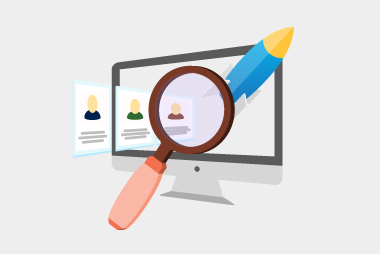- how much does your company know about EDI?
- how many trading partners will you be linking to?
- do you have enough spare time to do it inhouse?
- do you have complex or outdated software?
Implementing EDI in-house
Step 1: Put together an expert internal EDI team
An in-house roll out is a serious undertaking and starts with putting together an expert internal EDI team to plan, implement and maintain your EDI system. This expertise will need to be ongoing to keep it operating effectively.Step 2. Get all internal departments involved
Talk to all the relevant internal departments – procurement, finance, warehouse, IT etc – to work out how each one will be impacted and what’s needed to setup EDI.Step 3: Buy the right software, hardware and infrastructure
Expect this to be costly, and don’t forget to factor in the ongoing maintenance bills. And you’ll need the internal expertise to get it 100% right the first time.Step 4: Establish a secure and seamless connection with all partners
If your company isn’t experienced working with suppliers or VANs (value Added Networks) this lengthy, arduous process starts with establishing individual partner connections followed by an often laborious testing process of exchanging messages with their EDI provider to make sure messages are being correctly sent and received. Pros and cons to in-house implementation[vc_column width="1/2" css=".vc_custom_1618271818355{padding-right: 10px !important;}"]Pros
No need to wait for your EDI provider to make changes
[vc_column width="1/2" css=".vc_custom_1618271827363{padding-left: 10px !important;}"]Cons
Significantly higher staff investment
Maintenance is your responsibility
Without your own dedicated EDI team implementation will be lengthy, complex and costly
As you can see, if you’re time poor and lack the crucial internal resources and EDI knowledge, in-housing your EDI implementation is probably not your best option.Outsourcing EDI
Step 1: Find the right EDI supplier
Getting someone else to do all the heavy lifting of an EDI implementation offers significant benefits. But you need the right provider. Here’s your 4-step check list to do just that:- Do they meet your technical requirements? Eg, what services can they provide – onboarding, mapping, training, etc? Are they flexible enough?
- Can they tailor a solution to your needs and objectives?
- Do they have experience in industries relevant to yours?
- Is their support offering and pricing what you need?
Step 2: Connect to your EDI provider to ensure everything works
This includes testing your files and connection. But don’t stress, as your provider will guide you through.Step 3: Connecting with partners
Again, your EDI provider will do this for you this so no stress at your end and you’re 100% ready to go! Pros and cons to in-house implementation[vc_column width="1/2" css=".vc_custom_1618271818355{padding-right: 10px !important;}"]Pros
No worries about updating EDI technology and systems
Your EDI provider manages all trading partner requirements
You don’t need a dedicated internal team of EDI experts
[vc_column width="1/2" css=".vc_custom_1618271827363{padding-left: 10px !important;}"]Cons
Some providers are offshore with differing time zones
The undeniable conclusion is…
- If you don’t have expert EDI knowledge and resources you should outsource EDI implementation. It’s also very practical if you’re changing your ERP or other software.
- A good EDI provider knows their way around most software which makes all integrations significantly easier.
- If you already use EDI but have outdated systems and high maintenance costs, outsourcing is a good idea.
Request a call
Chat with one of our experts
Just fill out your details below and we'll be in touch within one business day.
